Upcycling clothing is an eco-friendly way to breathe new life into old garments, minimize waste, and add a personal touch to your wardrobe. With some creativity and a few simple tools, you can transform outdated or damaged clothes into stylish, customized pieces. Here’s a step-by-step guide to get you started on upcycling clothing like a pro:

1. Assess Your Wardrobe
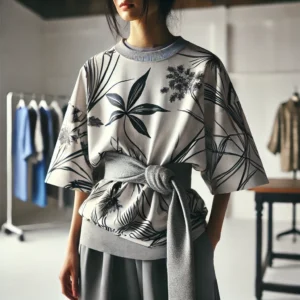
Start by going through your closet to identify pieces you no longer wear but still hold potential. This could include old jeans, oversized shirts, dresses that don’t fit, or items with minor damage (like small tears or stains). Look for sturdy fabrics and unique patterns that can be repurposed.
2. Gather Essential Supplies
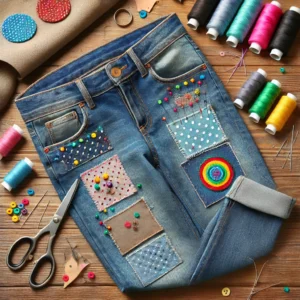
Having the right tools can make the upcycling process easier and more enjoyable. Here’s what you might need:
- Sewing kit (needles, thread, scissors)
- Fabric glue or iron-on adhesives
- Pins and measuring tape
- Patches, beads, and buttons for embellishments
- Fabric paint or dye for adding new colors or designs
3. Get Inspired with Simple Projects

If you’re new to upcycling, start with these easy ideas:
- Crop Tops from Old T-Shirts: Cut across the hem of an oversized T-shirt to create a crop top. You can fringe the bottom for added texture or tie-dye it for a colorful twist.
- Patchwork Jeans: Add patches of different fabric types or designs to worn-out areas or simply for decoration. This adds style and reinforces the fabric.
- Embroidered Details: Use basic embroidery to add floral or geometric patterns on pockets, collars, or sleeves.
4. Transform Old into New
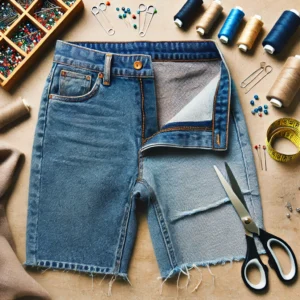
For more advanced projects, try:
- Turning Jeans into a Denim Skirt: Cut the legs off a pair of old jeans just above the knee and sew the open seams together. Use extra denim fabric from the removed legs to fill in any gaps at the back.
- Shirt-to-Dress Refashioning: Combine multiple large men’s shirts to create a patchwork dress. Cut and sew the pieces in a way that layers patterns and textures.
5. Personalize with Embellishments
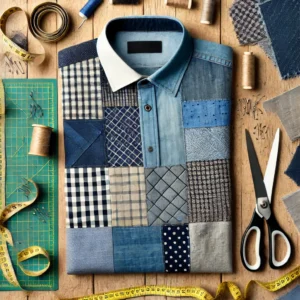
Give a unique twist to your clothes with embellishments:
- Iron-on Patches or Vinyl Prints: Personalize plain garments with quirky iron-on patches or create custom vinyl designs that reflect your personality.
- Beaded Fringe: Attach a fringe of beads along the hem or sleeves of a shirt for a playful and bohemian look.
6. Dye and Paint Techniques
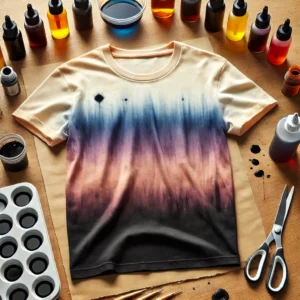
Add bold new colors with fabric dye or create intricate designs using fabric paint. Ombre dyeing, for instance, involves dipping fabric gradually to create a gradient effect. You can also use stencils to paint patterns or quotes on solid-colored clothing.
7. No-Sew Upcycling
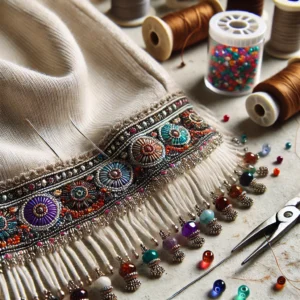

If sewing isn’t your forte, don’t worry. You can still upcycle with:
- Fabric Glue: Perfect for securing patches or hemming without stitching.
- Tie Knots and Wraps: Transform oversized items by tying them creatively or wrapping and knotting fabric pieces for a fitted look without permanent alterations.
8. Repurpose for Accessories
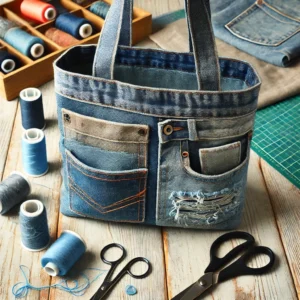
Upcycling isn’t limited to clothing; transform fabric scraps into:
- Headbands and hair ties
- Tote bags or purses
- Scrunchies using leftover elastic bands
9. Be Environmentally Conscious
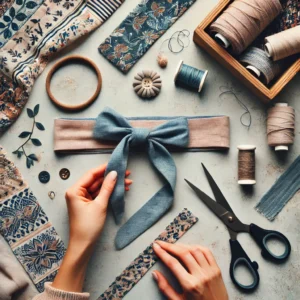
One of the biggest benefits of upcycling is reducing waste. As you explore these projects, save usable scraps for future projects or consider donating unusable pieces to local recycling centers.
Final Thoughts
Upcycling is as much about sustainability as it is about creativity. Embrace the imperfections and experiment with different ideas to create one-of-a-kind pieces that are truly yours. It’s not just an opportunity to refresh your wardrobe but also a rewarding way to contribute to a more sustainable future.
Leave a Reply